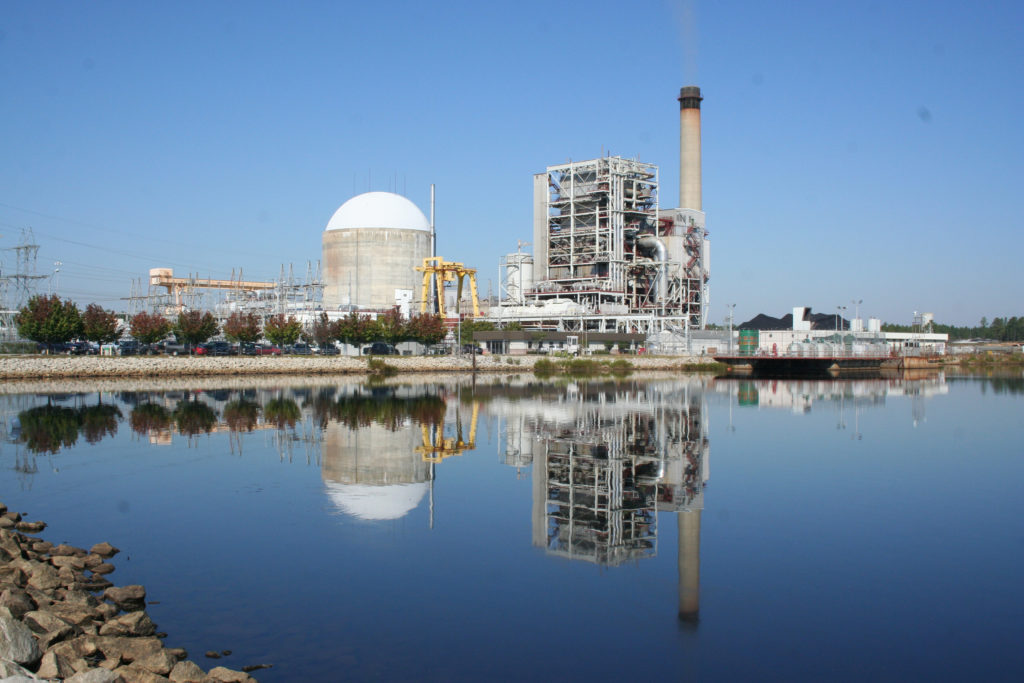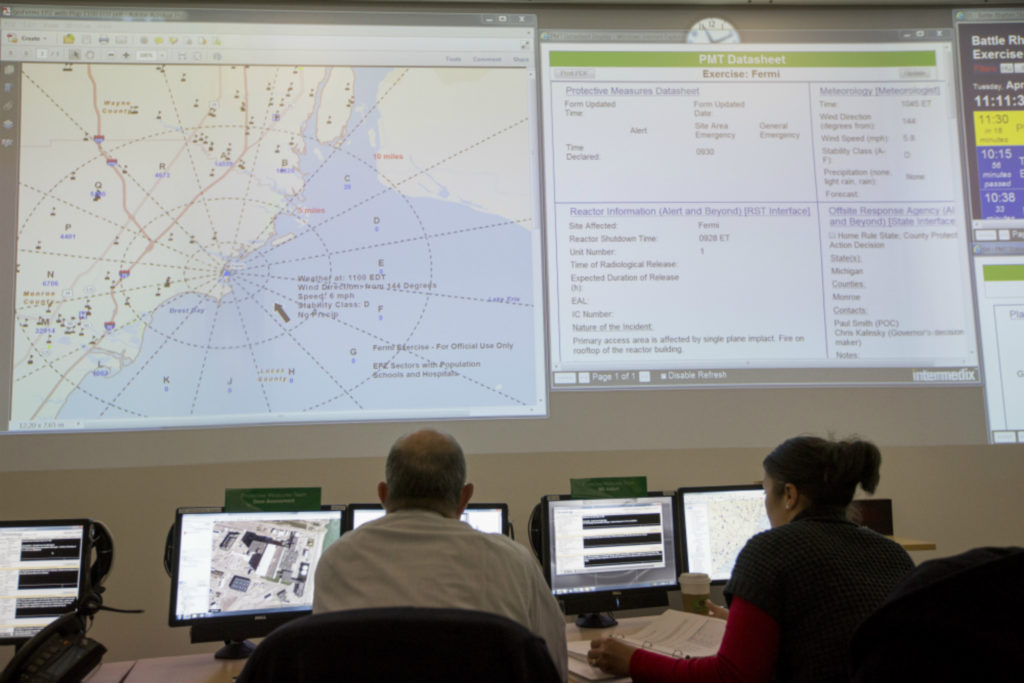Disaster by Design/ Safety by Intent #37
Disaster by Design
Disaster by Design/Safety by Intent #35 described some of the limitations in the emergency exercises conducted at least once every two years for U.S. nuclear power plants. The exercises are scheduled months in advance and last but a handful of hours. Real nuclear plant accidents are never scheduled in advance and take weeks to stabilize and years to recover. The value of the biennial exercises is diminished by these constraints.
Southern Exposure 2015
Southern Exposure 2015 (SE15) was the exception to that longstanding practice. It was a full-scale (or at least, fuller-scale) exercise conducted July 21, 22, and 23, 2015, with a follow-up on September 9 and 10, 2015, for the HB Robinson nuclear plant in South Carolina.

Fig. 1 (Source: NRC)
Day One
July 21 was a typical biennial emergency exercise where the U.S. Nuclear Regulatory Commission (NRC) evaluated how well plant workers handled the simulated reactor accident and the Federal Emergency Management Agency (FEMA) assessing the responses by local and state organizations.

Fig. 2 Staff in the NRC’s Incident Response Center during the biennial emergency exercise conducted April 29, 2014, for the Fermi nuclear plant in Michigan. (Source: NRC)
Day Two
July 22 stepped beyond the typical emergency exercise scope and focused on how state and county organizations handled issues such as relocating individuals who evacuated from the area. (Members of the public were not actually relocated, but Day Two role-played how temporary housing would be found and funded.)
Day Three
July 23 role-played longer term response measures by assuming it was now 14 days after the accident. Day Three of SE15 examined the transition from accident response to accident recovery, including issues such as impacts on the food and agriculture sectors.
Days Four and Five
September 9 and 10 role-played long term recovery efforts.
According to the NRC, SE15 was the first multiple-day emergency exercise the agency had participated in. It was the first time that the NRC tested how liability insurance provided by the federal Price-Anderson Act as amended would be used to help individuals evacuated from their homes following a nuclear plant accident. It was the first time the NRC had coordinated with an interagency Joint Information Center during an emergency exercise. And it was the first time the NRC had interfaced with the Unified Coordination Group during an emergency exercise.
Consequently, it marked the first time the NRC had made other than a cameo appearance during a nuclear plant emergency exercise. Not surprisingly, considering so many “firsts” were road-tested during SE15, the NRC noted that activities and responsibilities under the Price-Anderson Act, the role and responsibility of the NRC’s contact with the Unified Coordination Group, and the agency’s communications with state officials during the relocation and recovery phases of an accident were “Areas for Improvement.”
According to the FEMA, SE15 was the first radiological emergency preparedness exercise that included intermediate and long-term recovery issues. FEMA reported that SE15 demonstrated confusion about when Price-Anderson would pay for something and when FEMA, under the Stafford Act, would pay for it. FEMA seemed more concerned about ensuring that victims did not get reimbursed twice for their losses than about ensuring that all victims received compensation in a timely manner.
According to the plant’s owner, SE15 was atypical in that it involved teleconferences at the Chief Nuclear Officer level with the Nuclear Energy Institute (NEI) and the Institute for Nuclear Power Operations (INPO) regarding assistance provided by the industry. In addition, the owner participated as a member of the Unified Coordination Group along with federal and state officials during SE15 Day Two. The owner also reported that the scenario for SE15 had to be revised twice when its confidentiality had been breached due to the large number of non-traditional participants.
According to the U.S. Department of Energy (DOE), SE15 involved many more state and federal resources than have engaged in prior emergency exercises and marked the first time the RadResponder Network was used to log radiation readings. Not unexpectedly, DOE reported that coordination among the larger roster of players affected the timeliness of dispatching monitoring and response teams in the field during SE15.
According to the U.S. Department of Agriculture (USDA), while SE15 involved a larger than usual scope and roster of participants, it was still a limited-scale exercise. For example, “not all requested USDA agencies at the state level participated in” SE15. And while an actual reactor accident of this magnitude would activate the Nuclear Response Coordination Center, SE15 did not engage this entity.
According to the State of South Carolina’s Emergency Management Division, SE15 probed deeper into consequences like housing for persons evacuated and displaced as well as potential impacts on agriculture. The State reported that SE15 identified the need for changes to better support recovery activities.
Safety by Intent
Fuller scale emergency exercises like Southern Exposure 2015 are like medical and automobile insurance. No one wants to get sick or have a car stolen. But insurance helps people through such unwanted moments, preventing unwanted moments from having even less wanted outcomes.
SE15 role-played how plant workers along with local, state, and federal officials would respond to a very bad nuclear plant accident. SE15 identified a number of things that could have gone better and smoother. But more importantly, it demonstrated a solid foundation upon which to add the improvements and enhancements.
SE15-like exercises should be replicated for other U.S. nuclear plants. Because some owners operate multiple nuclear plants and many states have multiple nuclear plant sites, it would not be necessary for every biennial exercise at every operating nuclear plant to emulate SE15’s scale. But it would be prudent public policy to involve every plant owner and every applicable local and state entity in an emergency exercise like SE15 at least once every decade.
Hopefully, all that practicing and preparing would never be needed for a real nuclear reactor accident. But that situation would be better than a real reactor accident mishandled by unpracticed and unprepared responders.
—–
UCS’s Disaster by Design/ Safety by Intent series of blog posts is intended to help readers understand how a seemingly unrelated assortment of minor problems can coalesce to cause disaster and how effective defense-in-depth can lessen both the number of pre-existing problems and the chances they team up.
